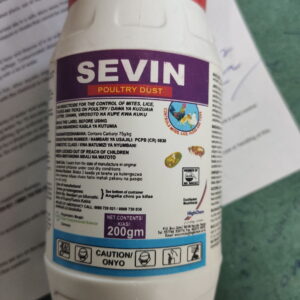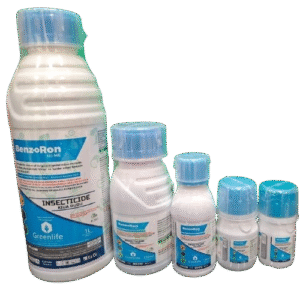You can contact us 24/7 +2540106871813
Trending:
9
Subtotal: KSh 42,587.00
Free Shipping on All Orders Over Ksh100
Best Discounts
KSh 2,299.00 Original price was: KSh 2,299.00.KSh 2,200.00Current price is: KSh 2,200.00.
KSh 1,299.00 Original price was: KSh 1,299.00.KSh 1,200.00Current price is: KSh 1,200.00.
KSh 1,497.00 Original price was: KSh 1,497.00.KSh 1,400.00Current price is: KSh 1,400.00.
KSh 9,999.00 Original price was: KSh 9,999.00.KSh 9,899.00Current price is: KSh 9,899.00.
KSh 698.00 Original price was: KSh 698.00.KSh 599.00Current price is: KSh 599.00.
KSh 1,098.00 Original price was: KSh 1,098.00.KSh 999.00Current price is: KSh 999.00.
The best discounts this week
Every week you can find the best discounts here.
Hygienic 7.5% SC 100ml
Hygienic 7.5% SC 20ml
Large Black Silage Tubes 300kg
KLC Layer Concentrate 20% 50kg
Benz-oRon 110ME 25ml
Benz-oRon 110ME 50ml
9
Subtotal: KSh 42,587.00
Free Shipping on All Orders Over Ksh100
Lanyards without energy absorbers, such as rope or web lanyards and chain rebar assemblies, are designed for positioning or restraint applications.
This rope shares the weight of a load between the core and the cover, giving it added strength. It's made of nylon, which compensates for sudden force, such as in towing applications or dock lines. The braided cover protects the braided core from wear during use. The rope resists rot and mildew.
Twin Webbing Shock Absorber Lanyard EN 355 with energy absorber fall arrester fitted with 2 textile wrenches, 26mm wide webbing and one screw karabiner AM002 and two snap hooks. Length folded: 2m. Length unfolded: 3,20mt. Conforms to BS EN 355:2002, PPE energy absorbers.
A full body harness is a harness designed to hold the wearer upright in the event of a fall from height. If worn correctly, a full body harness will distribute the energy generated during free-fall across the wearers' body evenly, reducing the potential for serious injury.
Terere, lidodo, alika or muchicha are the common names used for amaranth (Amaranthus viridis) among different communities in Kenya. Amaranth is a fast-growing annual crop belonging to the Amaranthacea family
Terere, lidodo, alika or muchicha are the common names used for amaranth (Amaranthus viridis) among different communities in Kenya. Amaranth is a fast-growing annual crop belonging to the Amaranthacea family
Terere, lidodo, alika or muchicha are the common names used for amaranth (Amaranthus viridis) among different communities in Kenya. Amaranth is a fast-growing annual crop belonging to the Amaranthacea family
Coriander is an annual herb in the family of Apiaceae. It is also known as cilantro, particularly in America and other in India. Coriander is most commonly used as a garnish on most Indian Sabzis. The leaves are variable in shape, broadly lobed at the base of the plant, and slender and feathery higher on the flowering stems. All parts of the plant are edible, but the fresh leaves and the dried seeds are commonly used in cooking. The leaves have a different taste from the seeds, with citrus overtones.
Coriander is an annual herb in the family of Apiaceae. It is also known as cilantro, particularly in America and other in India. Coriander is most commonly used as a garnish on most Indian Sabzis. The leaves are variable in shape, broadly lobed at the base of the plant, and slender and feathery higher on the flowering stems. All parts of the plant are edible, but the fresh leaves and the dried seeds are commonly used in cooking. The leaves have a different taste from the seeds, with citrus overtones.
Coriander is an annual herb in the family of Apiaceae. It is also known as cilantro, particularly in America and other in India. Coriander is most commonly used as a garnish on most Indian Sabzis. The leaves are variable in shape, broadly lobed at the base of the plant, and slender and feathery higher on the flowering stems. All parts of the plant are edible, but the fresh leaves and the dried seeds are commonly used in cooking. The leaves have a different taste from the seeds, with citrus overtones.
Coriander is an annual herb in the family of Apiaceae. It is also known as cilantro, particularly in America and other in India. Coriander is most commonly used as a garnish on most Indian Sabzis. The leaves are variable in shape, broadly lobed at the base of the plant, and slender and feathery higher on the flowering stems. All parts of the plant are edible, but the fresh leaves and the dried seeds are commonly used in cooking. The leaves have a different taste from the seeds, with citrus overtones.
Coriander is an annual herb in the family of Apiaceae. It is also known as cilantro, particularly in America and other in India. Coriander is most commonly used as a garnish on most Indian Sabzis. The leaves are variable in shape, broadly lobed at the base of the plant, and slender and feathery higher on the flowering stems. All parts of the plant are edible, but the fresh leaves and the dried seeds are commonly used in cooking. The leaves have a different taste from the seeds, with citrus overtones.
Coriander is an annual herb in the family of Apiaceae. It is also known as cilantro, particularly in America and other in India. Coriander is most commonly used as a garnish on most Indian Sabzis. The leaves are variable in shape, broadly lobed at the base of the plant, and slender and feathery higher on the flowering stems. All parts of the plant are edible, but the fresh leaves and the dried seeds are commonly used in cooking. The leaves have a different taste from the seeds, with citrus overtones.
Detroit Dark Red heirloom beets are vegetables that hail from Ontario, Canada, where Mr. Reeves developed them from blood turnips. This globular beet first made its appearance in 1892. However, beets seem to have originated in the Mediterranean region, where people grew them for thousands of years. Later, red beets grew in Germany and Holland, where these vegetables were used as cattle fodder; they were later imported to England for this purpose, but the poor began to raise them for an affordable food source. American colonists later brought red beets to the New World, where they became a commonly enjoyed vegetable both for their roots and their greens.
Detroit Dark Red heirloom beets are vegetables that hail from Ontario, Canada, where Mr. Reeves developed them from blood turnips. This globular beet first made its appearance in 1892. However, beets seem to have originated in the Mediterranean region, where people grew them for thousands of years. Later, red beets grew in Germany and Holland, where these vegetables were used as cattle fodder; they were later imported to England for this purpose, but the poor began to raise them for an affordable food source. American colonists later brought red beets to the New World, where they became a commonly enjoyed vegetable both for their roots and their greens.
Detroit Dark Red heirloom beets are vegetables that hail from Ontario, Canada, where Mr. Reeves developed them from blood turnips. This globular beet first made its appearance in 1892. However, beets seem to have originated in the Mediterranean region, where people grew them for thousands of years. Later, red beets grew in Germany and Holland, where these vegetables were used as cattle fodder; they were later imported to England for this purpose, but the poor began to raise them for an affordable food source. American colonists later brought red beets to the New World, where they became a commonly enjoyed vegetable both for their roots and their greens.
Detroit Dark Red heirloom beets are vegetables that hail from Ontario, Canada, where Mr. Reeves developed them from blood turnips. This globular beet first made its appearance in 1892. However, beets seem to have originated in the Mediterranean region, where people grew them for thousands of years. Later, red beets grew in Germany and Holland, where these vegetables were used as cattle fodder; they were later imported to England for this purpose, but the poor began to raise them for an affordable food source. American colonists later brought red beets to the New World, where they became a commonly enjoyed vegetable both for their roots and their greens.
Detroit Dark Red heirloom beets are vegetables that hail from Ontario, Canada, where Mr. Reeves developed them from blood turnips. This globular beet first made its appearance in 1892. However, beets seem to have originated in the Mediterranean region, where people grew them for thousands of years. Later, red beets grew in Germany and Holland, where these vegetables were used as cattle fodder; they were later imported to England for this purpose, but the poor began to raise them for an affordable food source. American colonists later brought red beets to the New World, where they became a commonly enjoyed vegetable both for their roots and their greens.
Detroit Dark Red heirloom beets are vegetables that hail from Ontario, Canada, where Mr. Reeves developed them from blood turnips. This globular beet first made its appearance in 1892. However, beets seem to have originated in the Mediterranean region, where people grew them for thousands of years. Later, red beets grew in Germany and Holland, where these vegetables were used as cattle fodder; they were later imported to England for this purpose, but the poor began to raise them for an affordable food source. American colonists later brought red beets to the New World, where they became a commonly enjoyed vegetable both for their roots and their greens.
Kale-Keeper (Thousand Headed) is a strong growing Sukuma wiki variety, very branching and frequently produces many heads, leaves can be picked over a long period including the dry season. It is a very productive variety with the ability to recover, but rather slow growing compared to other varieties of kale.
Filter Products
Archives
Filter by price
Recently viewed items
Actellic 25EC – 1ltr
Actellic 25EC contains pirimiphos-methyl, an organo-phosphorus compound, which kills by contact, ingestion, and fumigant action. Actellic 25EC interferes with nerve transmission leading to paralysis and death of the pest (cholinesterase inhibitor).
Rock Alum(aluminium sulphate) flocculating agent in the purification of drinking water and waste water treatment plants.
Catapult 480 SL (1ltr)
CATAPULT 480 SL is a broad spectrum non-selective systemic herbicide for the control of post-emergence broadleaf and grass weeds in maize field under minimum tillage or zero tillage and in non-cropped areas.
MODE OF ACTION: Glyphosate (N-(phosphonomethyl) glycine) is a broad-spectrum systemic herbicide used to kill weeds, especially annual broadleaf weeds and grasses. It inhibits plant enzymes involved in the synthesis of the aromatic amino acids: tyrosine, tryptophan, and phenylalanine and is absorbed through foliage, and minimally through roots, and translocated to growing points.
Apply CATAPULT® 480 SL as post emergence herbicide to vigorously growing weeds directly onto the foliage and immature bark at the end of raining seasons.
APPLICATION TIMING: Apply CATAPULT® 480 SL as a post-emergent to vigorously growing weeds directly onto the foliage and immature bark. Do not spray if rain is expected in 4 hours. For best results, spray coverage should be uniform and complete. Do not spray weed foliage to the point of run-off
APPLICATION TECHNIQUE: DO NOT treat weeds that are under poor growing conditions such as in drought stress, disease or insect damage as reduced weed control may result. Poor results may occur if weeds are treated whilst heavily covered with dust or have been mowed, grazed or cut and have not been allowed to re-grow to the recommended stage for treatment. Rain or irrigation occurring within 6 hours after application may reduce effectiveness.
PREPARATION OF SPRAY MIXTURE: Half fill the spray tank (knapsack sprayer) with water. Add the required amount of CATAPULT® 480 SL, then fill the water to the required level and mix or agitate thoroughly to uniformity. Ensure that the mixture is used the same day.
RE-ENTRY PERIOD: DO NOT enter treated areas during the restricted entry interval of 12 hours unless wearing cotton overalls buttoned to the neck and all other protective gears, which must be washed after every use.
PHI: 7days
Active ingredient Glyphosate isopropyl amine salt 480 g/L
Rate/Ha/20L 4L (200ml)
Crops Maize, Non-cropped areas
Target Broadleaf, grass weeds and sedges
Action Non-selective
Sevin dudu dust is a broad spectrum insecticides dust for the control of safari ants, fleas, bedbugs, lice, mites, ticks, and keds.
Vertex Cleaning Mop
Vertex Cleaning Mop



















